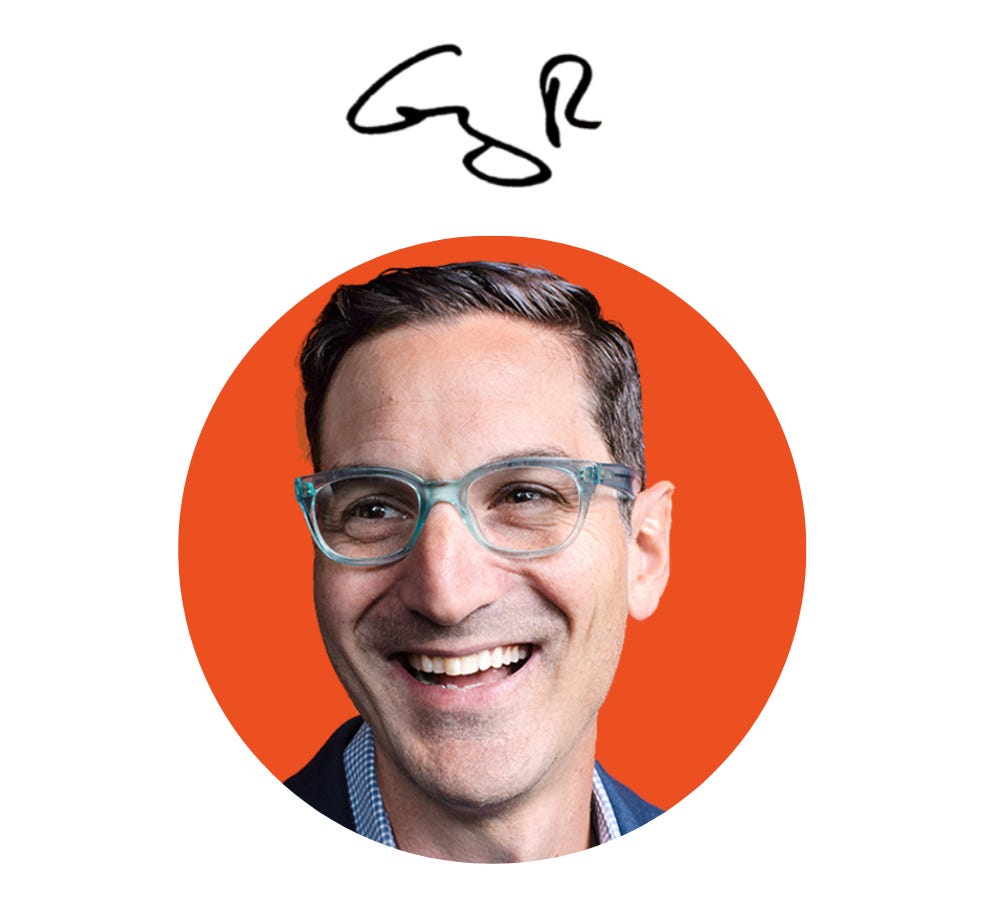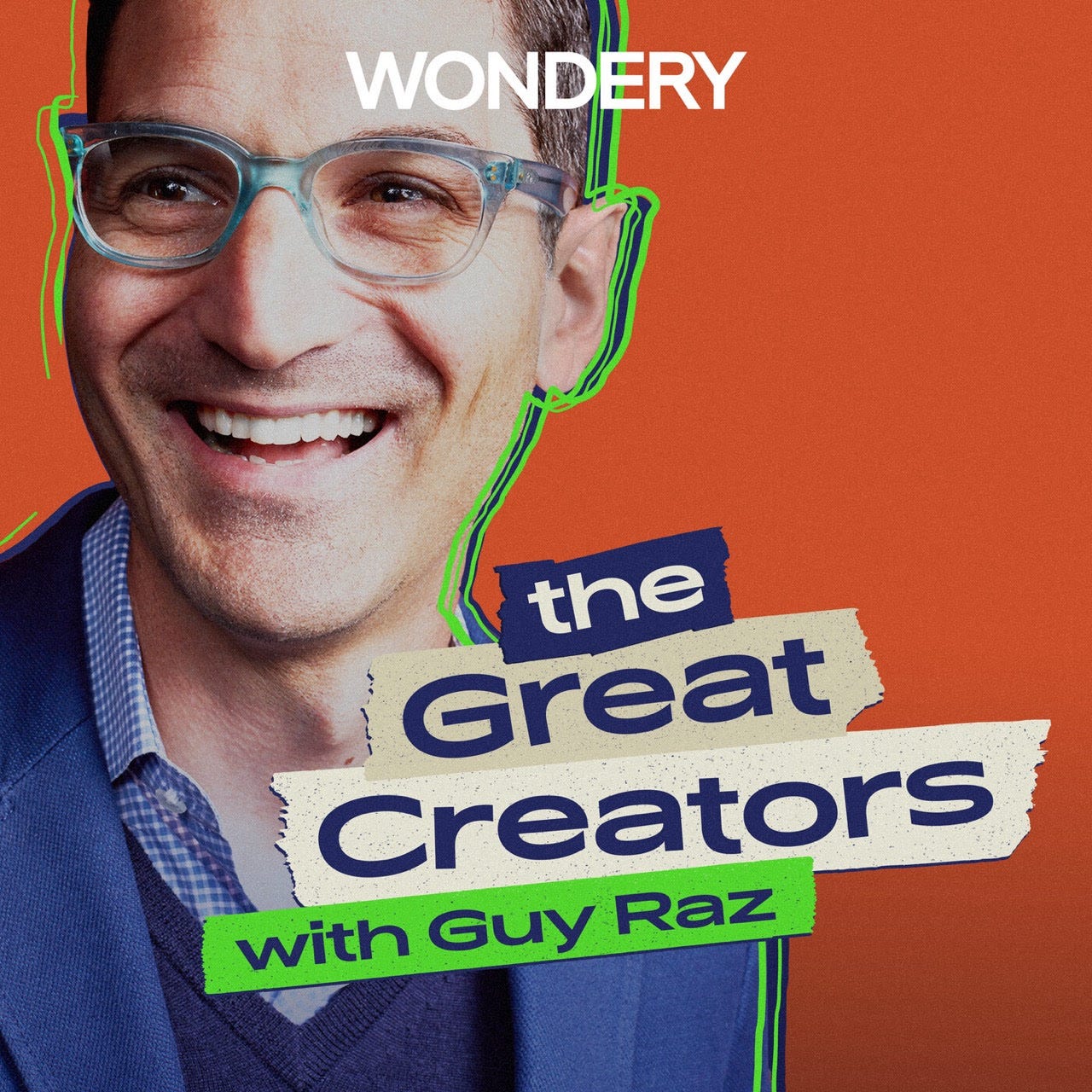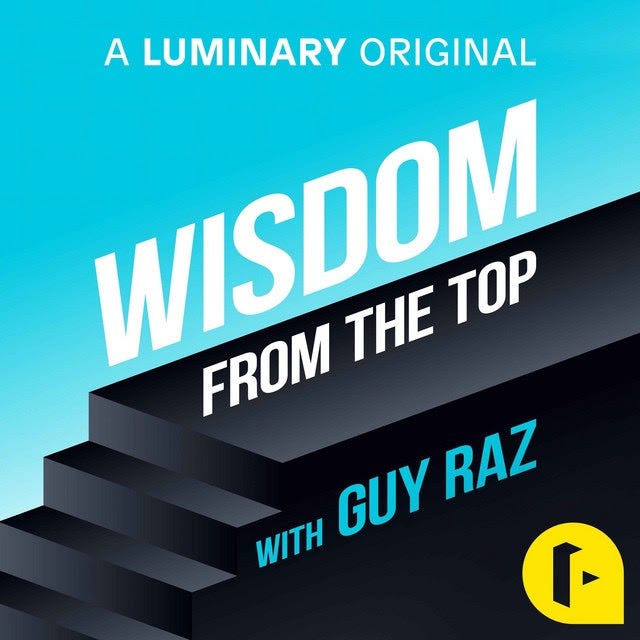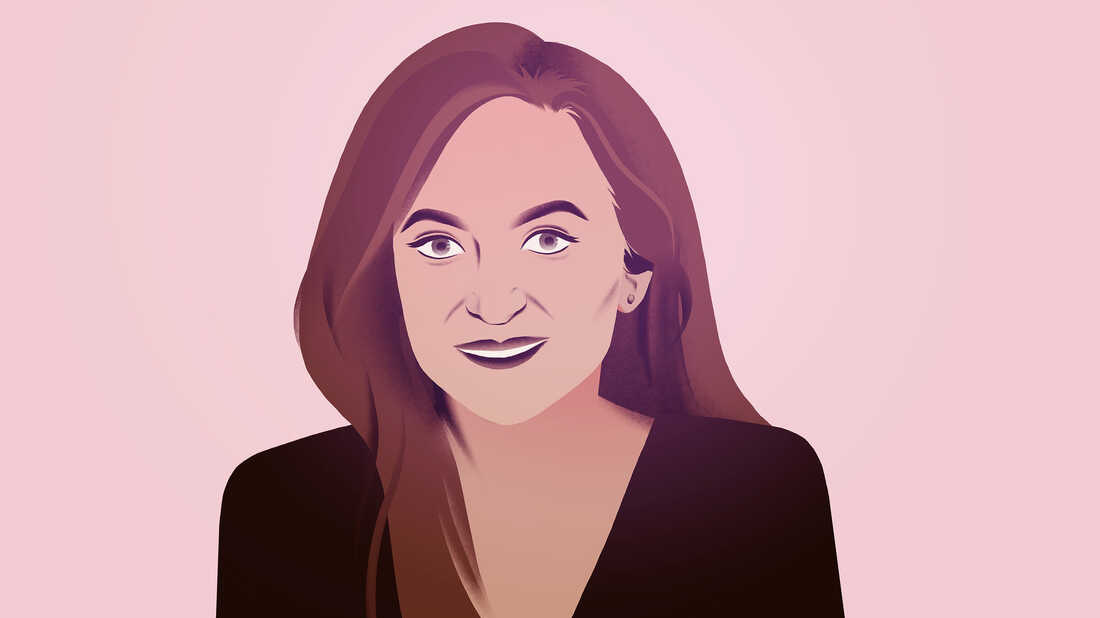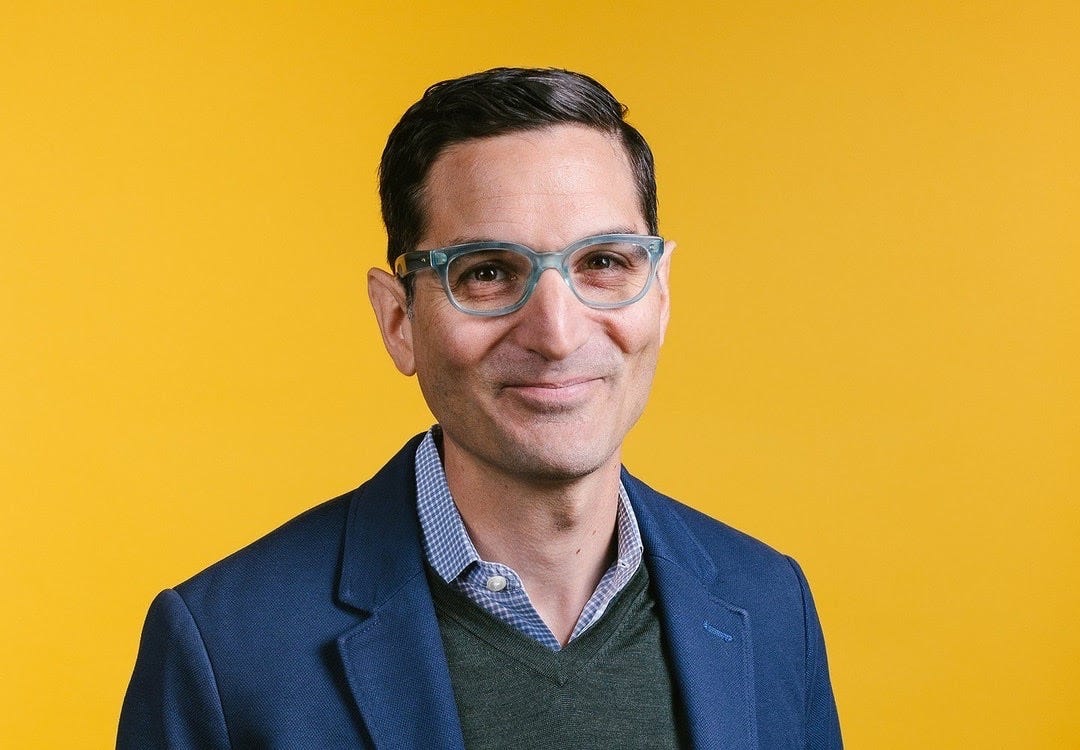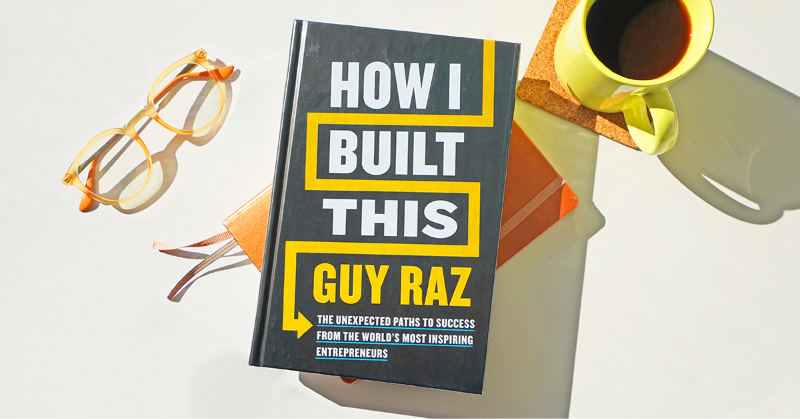I have been in podcasting long enough to know that there is always a shiny new object.
13 years ago, when I launched my first podcast, I was the shiny new object for a brief period of time. But in short order, a new show—a true crime drama, a comedy show or a copy of what I was producing—started to get a lot of buzz.
It’s even happened with How I Built This.
Inevitably, a new show, somewhat similar, pops up and the “right” podcast critic or the “right” reporter writes a glowing profile.
And also inevitably, comes the pressure to change course—to try and do what our competitors are doing.
Now, look, sometimes…that approach can work. If a competitor is doing something interesting, it might be worthwhile trying to do the same thing.
But in most cases I’ve studied—including this week’s episode of the show—it’s usually best to keep your head down and focus on the fundamentals of what you do well.
Again, usually, it’s why customers are attracted to your product in the first place.
In the case of SpotHero, the deck was stacked against Mark Lawrence. No one would have anticipated that he would be the one to build the biggest parking app in North America.
He didn’t come out of Stanford or MIT. He wasn’t an engineer. And he didn’t have any connections to the otherwise impenetrable parking industry—dominated by a few national players.
Mark’s approach when he started Spot Hero was to go slow…and small. His plan was to get a foothold in Chicago—where he’s from. It would take him a few years before he felt confident enough to expand—first to Boston, then DC, then Baltimore and only then…to San Francisco.
Now why was San Francisco the holy grail? Well, its not because of parking. It’s because by the time he decided to enter the San Francisco market, there were dozens of similar start-ups trying to do the same thing.
SpotHero was a comparatively boring business.
You get on the app, look for the cheapest parking spot closest to you, reserve the spot, drive there and park. The problem for Mark was that his competitors were offering something much more exciting.
Brands like Luxe, Zark, or Carbon offered things like concierge parking. Literally…a human on a scooter would come to you, pick up your car, park it and then return it to you anywhere in the city when you were ready to retrieve your car. And they offered this service at the same price as SpotHero’s service.
Investors were throwing money at these start-ups and Mark’s funders were pressuring him to change his model—to start offering similar services.
But Mark truly believed that the model his competitors offered wasn’t sustainable.
First, it required a LOT of humans. That’s expensive.
Second, the time it took to retrieve a car, park it and then deliver it back later on meant that these brands were literally subsidizing the cost.
It cost these brands more money to deliver the service than the consumer paid for it!
Still, Mark wasn’t able to make the case and had a very difficult time raising more capital.
So he waited them out.
And one by one, over a few years, each of his competitors disappeared and fizzled out.
It’s a really important reminder that most of the time…its better NOT to get distracted by the shiny new object everyone seems to be talking about.
(important exceptions: iPhones REALLY were the shiny new object that would soon demolish the Blackberry. Netflix v Blockbuster, Uber/Lyft v Taxis)
Usually, the answer to a slick new rival is simply to focus on the quality and the value of the product or service you offer.
Mark’s story ties a little bit into my other guest this week: Jenn Hyman, CEO of Rent the Runway. She joined me on the advice line to help give some up-and-coming founders advice.
One of the insights Jenn has derived from running her business now for more than 15 years is this:
If you stay in the game long enough, you will eventually outlast your rivals.
She took the company public in 2021, navigated a global pandemic that upended retail, and faced the highs and lows of leading a business in an unpredictable world.
Jenn’s simple secret is having a low ego.
She believes that the ability to adapt, take criticism, and weather tough times without getting discouraged is the greatest advantage an entrepreneur can have.
Because in the end, success isn’t just about having a great product—it’s about having the endurance to keep going when others quit.
The most successful entrepreneurs aren’t necessarily the smartest or the most talented. They’re often the ones who refused to walk away. The ones who stayed the course.
So whatever stage you’re at—just starting out, struggling in the middle, or wondering if you should keep going—remember:
Ignore the “shiny new objects.”
Stay in the game.
– Guy
On the Podcasts This Week!
SpotHero: Turning Parking Chaos into a Business
When Mark Lawrence and his roommate racked up thousands in parking tickets, they didn’t just complain—they built a solution.
What started as a peer-to-peer parking experiment near Wrigley Field quickly ran into problems. So Mark made a bold pivot, one that would turn SpotHero into a multi-city platform—but not without challenges.
Investors pushed for faster growth. Competitors burned through millions chasing expansion. Mark chose a different path—steady, strategic, and built to last.
Tune in to hear how SpotHero survived near-collapse, outlasted bigger players, and became one of the largest digital parking platforms in North America.
HIBT Advice Line: Let Go of Ego
This week on the Advice Line, I’m joined by Jenn Hyman, co-founder and CEO of Rent the Runway. After 15 years at the helm, Jenn has learned that resilience—and letting go of ego—are key to long-term success.
First up, Sarah: Do customers actually care about locally made products?
Sarah Bell runs Easkey Right, a jewelry brand that uses marine rope to craft coastal-inspired accessories. She’s wondering if customers truly value her handmade process—or if scaling production elsewhere makes more sense. We think she should talk to 100 customers and test price increases to see what really drives demand.
Next, Carrie: How can we bootstrap to $1M in sales?
Carrie Spoor co-founded Swair Hair, a haircare brand designed for people who work out. Investors want to see seven-figure revenue before funding, but Swair needs cash to grow. Our advice? Focus on repeat purchases and scrappy collaborations to drive growth!
Finally, Chabella: How do I raise capital for a fashion brand?
Chabella Gomez founded Chabella, a sustainable workwear line with spill-proof, convertible designs. Investors see fashion as risky, so she’s struggling to secure funding. We think she needs to find avenues for showcasing her product in action!
Jenn reminds us that ego can hold entrepreneurs back. The ones who win are those who stick it out, adapt, and keep pushing forward.
If you would like to be featured on an upcoming episode, call and leave a 1-minute message at 1-800-433-1298 or send a voice memo to hibt@id.wondery.com
Nathan Lane on Reinvention, Risk-Taking, and the Power of Live Performance
Nathan Lane has spent decades making audiences laugh—on Broadway, in film, and on television. But despite being called “the greatest stage entertainer” of his era, that title never sat right with him.
It felt limiting, as if his work was only about making people smile when, in reality, his ambitions stretched far beyond comedy.
From his early days performing singing telegrams to his breakout roles in The Birdcage and The Producers, Nathan built a career on impeccable comedic timing and showmanship. But at a certain point, he wanted something more—roles that scared him, challenged him, and forced people to see him in a different light.
So he took a risk.
In this episode, Nathan shares what drove him to pursue deeply dramatic roles, how he balances comedy and darkness in his performances, and why he believes the audience is the most important cast member in any show.
Watch it on YouTube:
Bob Rosenberg: Brewing Success at Dunkin’
At just 25 years old, Bob Rosenberg stepped in as CEO of his father’s company, Dunkin’ Donuts. But youth and ambition weren’t enough to shield him from hard lessons.
A decade into his leadership, an overly aggressive expansion plan put the company at risk—and nearly cost him his job. The board was ready to push him out. But instead of folding under pressure, Bob grew into the leader Dunkin’ needed.
He reworked the company’s strategy, steadied its growth, and turned Dunkin’ Donuts into an international powerhouse.
Bob’s journey is a reminder that leadership isn’t about having all the answers from day one—it’s about learning, adapting, and proving yourself over time.
Science Podcasts for Kids!
Drive-Thru Dolphin Spa
Mindy is up to something fishy—lassoing a drive-thru car wash! But what in the WOW does this have to do with dolphins?!
In this week’s Wow in the World, me and Mindy dive into a slimy, slippery secret—coral mucus!
Turns out, dolphins have been spotted rubbing up against certain corals, and scientists believe it’s their way of getting a deep-clean skin treatment. Could coral be nature’s ultimate dolphin spa?
Prehistoric WOWs!
Did you know some dinosaurs had feathers instead of scales? Or that the T-Rex had a bite force stronger than a crocodile’s?
And here’s a jaw-dropper—some dinosaurs were the size of a school bus… while others were smaller than a chicken!
Stomp, chomp, and roar your way through this dino-mite episode of Two What’s And A Wow!
From the Archives!
Rent The Runway: Jenn Hyman
In 2008, Jenn Hyman watched her sister splurge on a new dress for a party instead of re-wearing one she already owned—and that sparked an idea.
What if women could rent high-end fashion instead of buying it outright?
Along with her co-founder, Jenn built Rent the Runway, a platform where customers could borrow designer dresses for a fraction of the retail price. But disrupting the fashion industry wasn’t easy. Investors were skeptical, and as female founders, they faced their share of patronizing boardrooms and difficult conversations.
Despite the hurdles, Rent the Runway took off. Today, millions of women use the service, and the company has grown into a $300 million business redefining how we think about fashion and ownership.
Rivian: RJ Scaringe
Starting a car company from scratch is one of the hardest business challenges out there—but that didn’t stop RJ Scaringe.
In 2009, he set out to build something radically different: an electric truck and SUV brand that could compete with traditional gas-powered giants. With no major backers and a market that was still skeptical of EVs, RJ spent years refining his vision in stealth mode, knowing Rivian’s success would depend on making trucks that were not just sustainable, but fun, rugged, and built for adventure.
After more than a decade of planning, pivots, and overcoming massive supply chain hurdles, Rivian finally rolled its first vehicles off the line in 2021.
Now, with a growing customer base, a $30 billion valuation, and a full-scale manufacturing plant in Illinois, RJ has done what few thought possible—he’s made Rivian a serious contender in the electric vehicle space.
See you next time!
What do you want more or less of?
Just send a tweet to @guyraz or a message on IG to @guy.raz or LinkedIn and put #GuyRazNewsletter at the end so I can find it.




